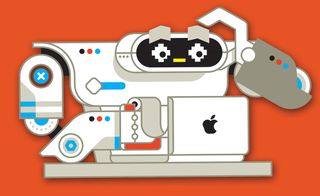4 ways to cash in as a freelancer
Bryce Bladon, editor-in-chief of Clients From Hell, shares his expert advice for making more as a freelancer.
03. Figure out your client's problems

Freelancers typically bill according to what others are charging or what the freelancer has charged in the past. Instead, they should be billed to the client's needs or goals, such as, 'Why does the client need this?' and, 'What are they trying to accomplish?'
Even if you ask the client these questions, their answers may not be perfect. Ambiguities often arise because the client doesn't completely know the answer, or they haven't explored the issue in great depth. You should help them find out, and if they continue to be an obstacle, try to help them understand that you're not looking to rip them off; you're looking to meet their needs and goals in the most effective way possible.
Brennan Dunn of Double Your Freelancing suggests asking yourself the following four questions: What series of events led the client to seek you out? What problem pre-empted contacting you? (Note that these first two are not always the same thing.) What effect will this problem, left unsolved, have on the client's business? And what will solving the problem do for the client and their business?
"Specifically," Dunn says, "what's the financial upside for the client if you solve the underlying problem?"
The answer to those questions will inform how you quote the client. If a client is building a website to sell tens of thousands of dollars' worth of product, they should be willing to spend a portion of that profit to make sure the website facilitates this.
Present yourself as a catalyst for the results that the client needs or wants. This way, you're not an expense: you're an investment in the client's business. They're going to spend a little money on you now because you're going to help them make more later.
Keep in mind, more money isn't always the client's goal for the project, but it is almost always a factor in the equation. Whatever your client is looking for, present yourself as a guide for the client getting there. "No one has ever paid you for design," says Dunn. "Let that sink in for a second."
"Clients hire us because they need our design to do something valuable for their business," continues Dunn. "Once you internalise that, it affects how you market yourself, how you sell, what you deliver and what you charge for it."
04. Learn to negotiate your rate

Always avoid reducing your rate to accommodate a client. For a lower rate, you should be reducing the scope of your work or the deliverables. The only time your rate should be reduced without a decrease in workload is if you're getting something out of the deal that makes it worth it for you, such as a longer commitment from the client (so you don't have to spend as much time on marketing or finding new prospects) or better usage terms.
If you must negotiate your rate instead of the scope of work, start at a high figure. Few clients will say no outright. Instead, they'll try to negotiate you down. "It's far easier to negotiate down than up," says Joe Phelan, a freelance designer with over 10 years of experience. "If a client thinks they are getting a good deal, more the better." In some instances, a client may forgo negotiations and just say yes. If that's the case, it's probably time for you to increase your base rate."
When you enter negotiations, don't approach it as a cutthroat, you-against-your-client scenario. Instead, approach it as you would any other project. Work with your client to define the scope and deliverables, and negotiate your rate from there. This exercise gets the client mentally and emotionally invested in the idea of your services and what you can accomplish together. If the client's budget doesn't meet your rates, reduce the scope or deliverables, not your rate.
"With art and design being so subjective, it's best to outline the processes involved as much as possible," says Phelan. "Talk the client through your thoughts and ideas. Listen to theirs. Build trust and understanding."
You should always come prepared with evidence proving the value of your services. A case study that communicates how your work solves problems or meets clients' needs is a persuasive tool and a tangible proof of concept. Salary surveys are widely available and knowing that range is always worthwhile. Professional associations are also quality resources, as are others in your industry.
Never reveal your past salary, even if pressed. Typically, a client will assign this value to you as a benchmark, and you'll be negotiating against your past self. Rather, focus on what you're worth right now. Always have your minimum acceptable rate in your back pocket and never negotiate below that.
Finally, don't underestimate yourself and your value. It doesn't matter is another designer is charging half what you are. You're not them. Your style and your various points of difference are why you command your rate, and that's why anecdotal evidence – even from quality salary surveys – should be a tool to use, not a rule to obey.
This article originally appeared in Computer Arts issue 268; buy it here.
Related articles:

Thank you for reading 5 articles this month* Join now for unlimited access
Enjoy your first month for just £1 / $1 / €1
*Read 5 free articles per month without a subscription

Join now for unlimited access
Try first month for just £1 / $1 / €1
Get the Creative Bloq Newsletter
Daily design news, reviews, how-tos and more, as picked by the editors.
